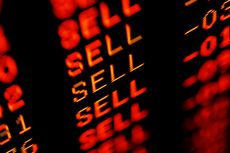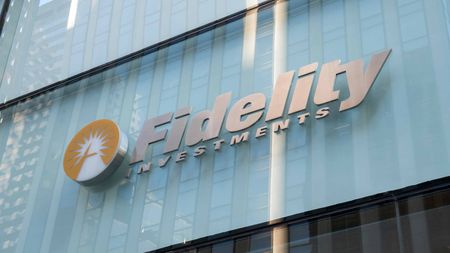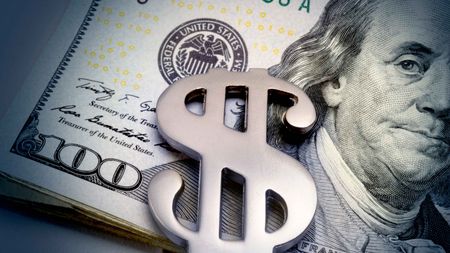Tapping Truly Emerging Markets
The new T. Rowe Price Africa & Middle East fund gives investors access to stock exchanges that only recently opened to foreign investors.
It's been hard to go wrong investing in emerging markets in recent years. Chris Alderson, lead manager of T. Rowe Price Emerging Markets Stock (symbol PRMSX), a Kiplinger 25 member, has made the most of this bull run.
His fund returned a sizzling 62% in the year through October 24, six points better than the MSCI Emerging Markets Index -- the most common benchmark for funds that invest in developing countries Korea, Taiwan, Russia and Brazil. Over the past five years, he's returned an annualized 40%, an average of four percentage points per year ahead of the benchmark.
So now he's turning to relatively virgin markets with T. Rowe Price Africa & Middle East (TRAMX), which launched in September and gained 10% in its first month. "This represents the last frontier," says Alderson.

Sign up for Kiplinger’s Free E-Newsletters
Profit and prosper with the best of expert advice on investing, taxes, retirement, personal finance and more - straight to your e-mail.
Profit and prosper with the best of expert advice - straight to your e-mail.
You don't want to put your life savings in such a narrow and essentially untried geographic sector, but there are quite a few intriguing aspects to this new fund.
Stock exchanges in Africa and the Middle East, only recently opened to foreign investors, are under-researched and under-discovered (Alderson says that on average only one analyst covers a stock). That creates stock inefficiencies and fine opportunities for shrewd investors. The correlation with the U.S. stock market is a remarkably low 10% at a time when most international markets have been moving closely in sync with the U.S.
Gulf States such as the United Arab Emirates, Qatar and Oman are drowning in new oil and gas wealth from petroleum selling for more than $80 a barrel. Oil is a state-owned industry, but Alderson says asset prices, including stocks, are destined to rise.
That's because most of these countries peg their currencies to the dollar but run higher inflation rates than the U.S. does. That creates the negative real interest rates (inflation higher than stated interest rates), and that's conducive to asset inflation.
Examples of Alderson's holdings are Bank Muscat, which has a 42% share of financial services in Oman, and Orascom Construction Industries of Egypt, which is the largest contractor in the Middle East. (Africa & Middle East fund does not invest in Israeli stocks, which are instead held in T. Rowe Price Emerging Europe and Mediterranean, also managed by Alderson.)
Strong commodity prices, from oil in Nigeria to gold, platinum and diamonds in South Africa, are also driving African economies. As a continent, Alderson says, Africa has grown by a respectable 6% annually over the past five years.
Africa & Middle East requires a $2,500 initial minimum investment. Anticipated annual expenses of 1.75% are on the high side but are not surprising given the exotic fare in which the fund invests. The fund does not levy a sales charge, but there's a 2% redemption fee on shares held 90 days or less.
Get Kiplinger Today newsletter — free
Profit and prosper with the best of Kiplinger's advice on investing, taxes, retirement, personal finance and much more. Delivered daily. Enter your email in the box and click Sign Me Up.
Andrew Tanzer is an editorial consultant and investment writer. After working as a journalist for 25 years at magazines that included Forbes and Kiplinger’s Personal Finance, he served as a senior research analyst and investment writer at a leading New York-based financial advisor. Andrew currently writes for several large hedge and mutual funds, private wealth advisors, and a major bank. He earned a BA in East Asian Studies from Wesleyan University, an MS in Journalism from the Columbia Graduate School of Journalism, and holds both CFA and CFP® designations.
-
 Stock Market Today: Dow Dives 1,679 Points on Trump Tariff Shock
Stock Market Today: Dow Dives 1,679 Points on Trump Tariff ShockU.S. stocks lost roughly $3.1 trillion in market cap on Thursday – the biggest one-day decline since the start of the COVID-19 pandemic in March 2020.
By Karee Venema Published
-
 Did Florida’s Chance at $1,000 in Property Tax Rebates Vanish?
Did Florida’s Chance at $1,000 in Property Tax Rebates Vanish?State Taxes The Florida Legislature bypassed Gov. Ron DeSantis’ wish to cut property taxes and instead voted to lower the state’s sales tax.
By Gabriella Cruz-Martínez Published
-
 White House Probes Tracking Tech That Monitors Workers’ Productivity: Kiplinger Economic Forecasts
White House Probes Tracking Tech That Monitors Workers’ Productivity: Kiplinger Economic ForecastsEconomic Forecasts White House probes tracking tech that monitors workers’ productivity: Kiplinger Economic Forecasts
By Matthew Housiaux Published
-
 The 5 Best Actively Managed Fidelity Funds to Buy Now
The 5 Best Actively Managed Fidelity Funds to Buy Nowmutual funds In a stock picker's market, it's sometimes best to leave the driving to the pros. These Fidelity funds provide investors solid active management at low costs.
By Kent Thune Last updated
-
 The 12 Best Bear Market ETFs to Buy Now
The 12 Best Bear Market ETFs to Buy NowETFs Investors who are fearful about the more uncertainty in the new year can find plenty of protection among these bear market ETFs.
By Kyle Woodley Published
-
 Investing in Emerging Markets Still Holds Promise
Investing in Emerging Markets Still Holds PromiseEmerging markets have been hit hard in recent years, but investors should consider their long runway for potential growth.
By James K. Glassman Published
-
 Don't Give Up on the Eurozone
Don't Give Up on the Eurozonemutual funds As Europe’s economy (and stock markets) wobble, Janus Henderson European Focus Fund (HFETX) keeps its footing with a focus on large Europe-based multinationals.
By Rivan V. Stinson Published
-
 Stocks: Winners and Losers from the Strong Dollar
Stocks: Winners and Losers from the Strong DollarForeign Stocks & Emerging Markets The greenback’s rise may hurt companies with a global footprint, but benefit those that depend on imports.
By Anne Kates Smith Published
-
 Vanguard Global ESG Select Stock Profits from ESG Leaders
Vanguard Global ESG Select Stock Profits from ESG Leadersmutual funds Vanguard Global ESG Select Stock (VEIGX) favors firms with high standards for their businesses.
By Rivan V. Stinson Published
-
 Kip ETF 20: What's In, What's Out and Why
Kip ETF 20: What's In, What's Out and WhyKip ETF 20 The broad market has taken a major hit so far in 2022, sparking some tactical changes to Kiplinger's lineup of the best low-cost ETFs.
By Nellie S. Huang Published